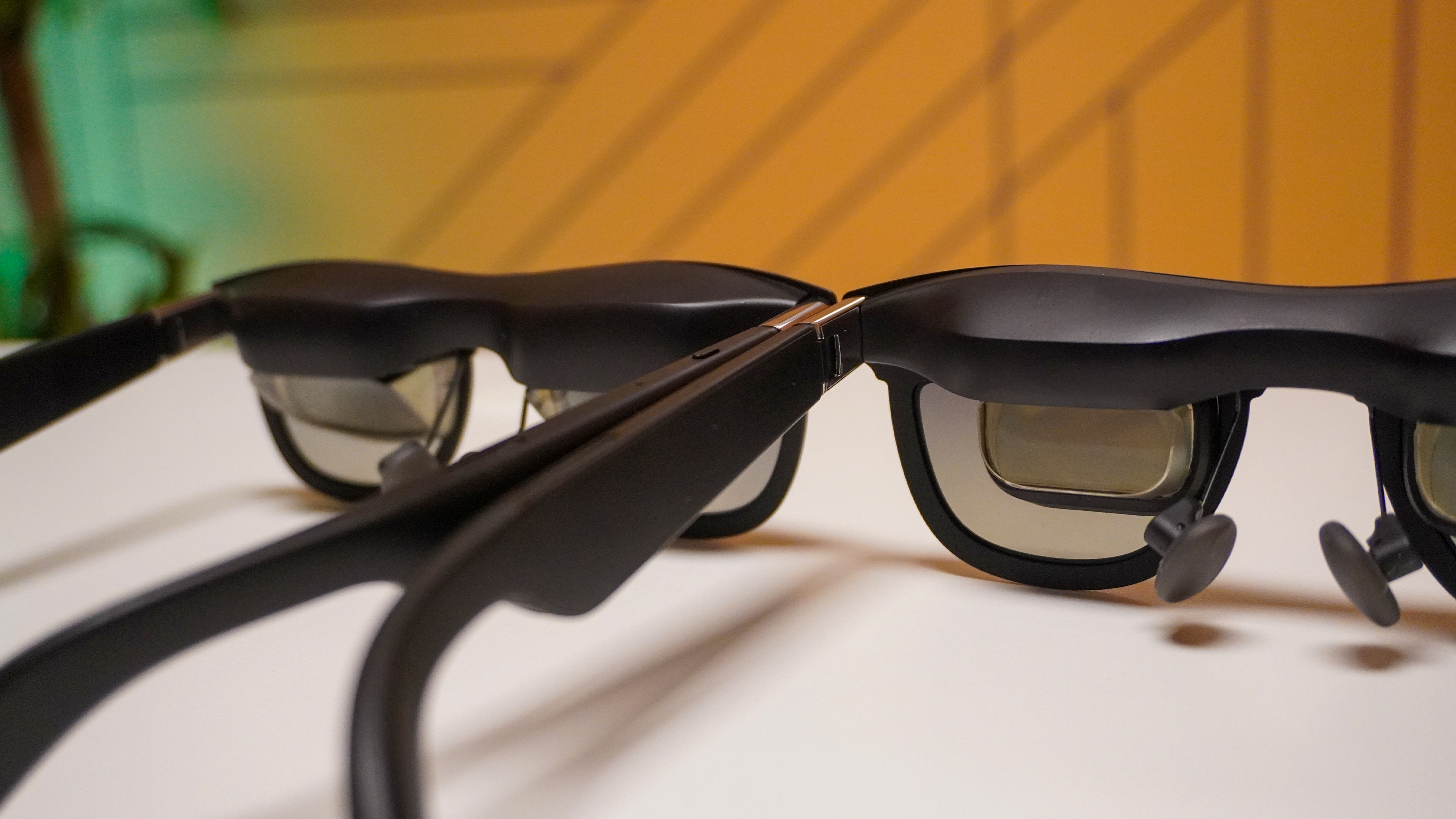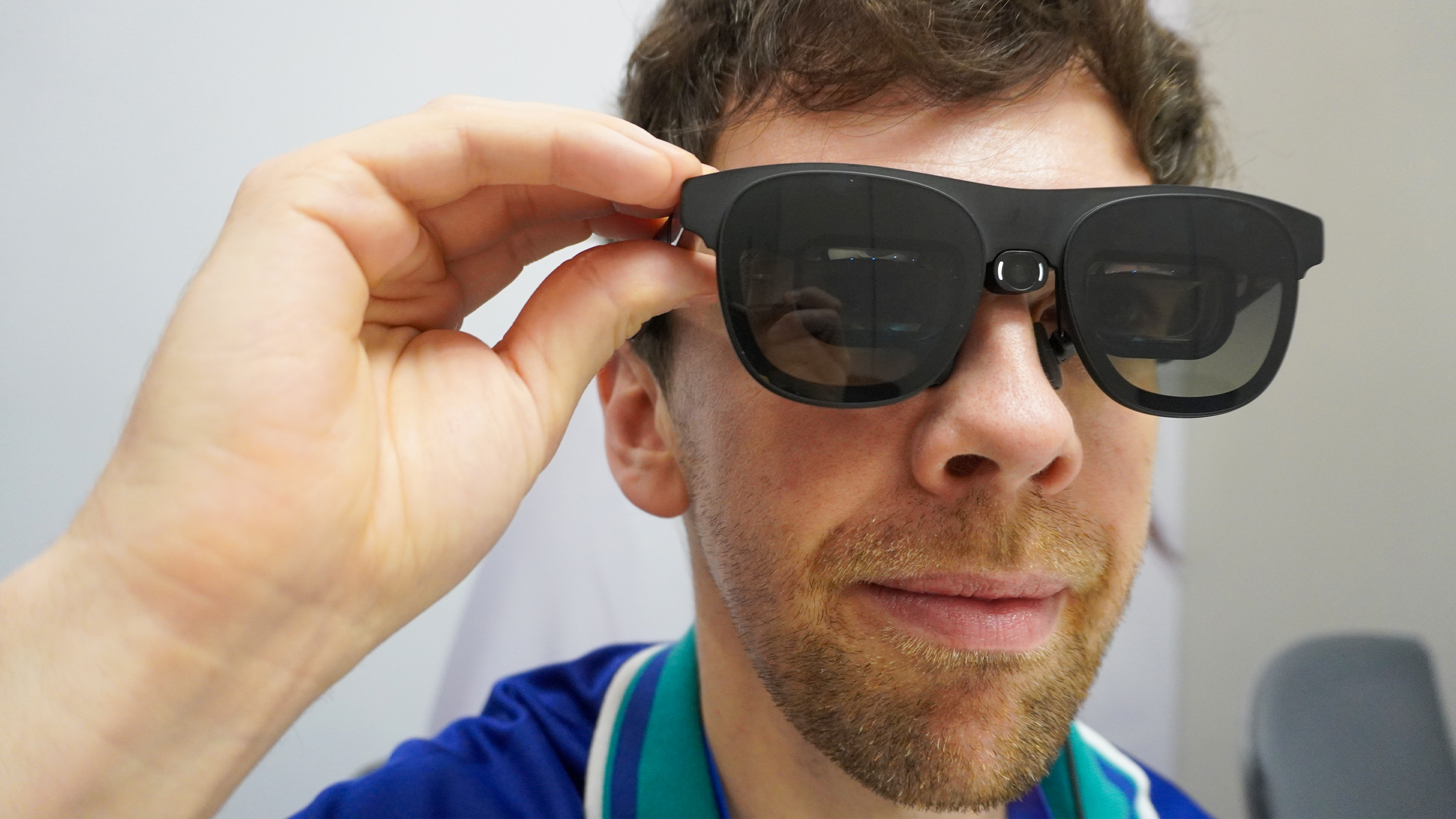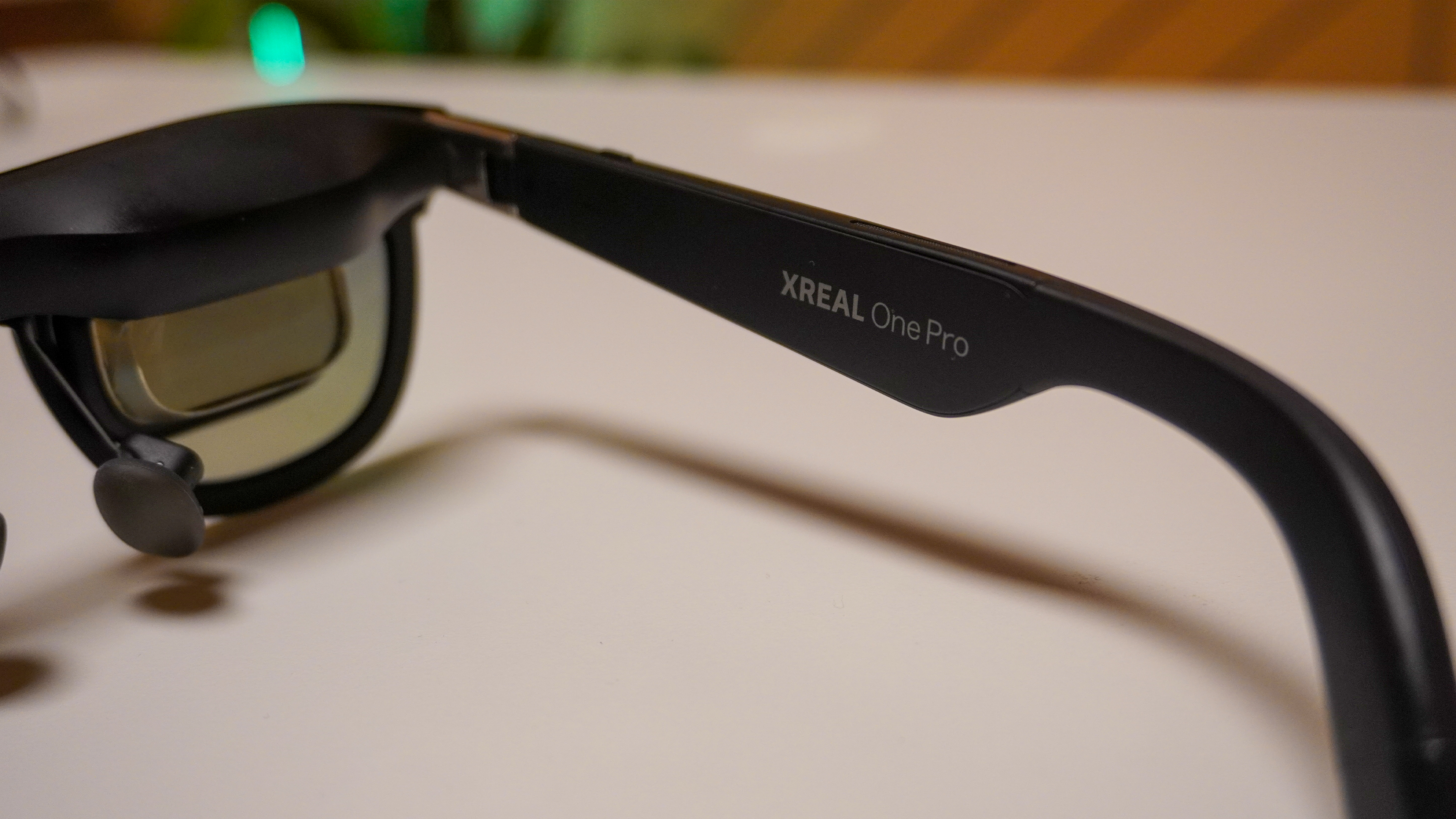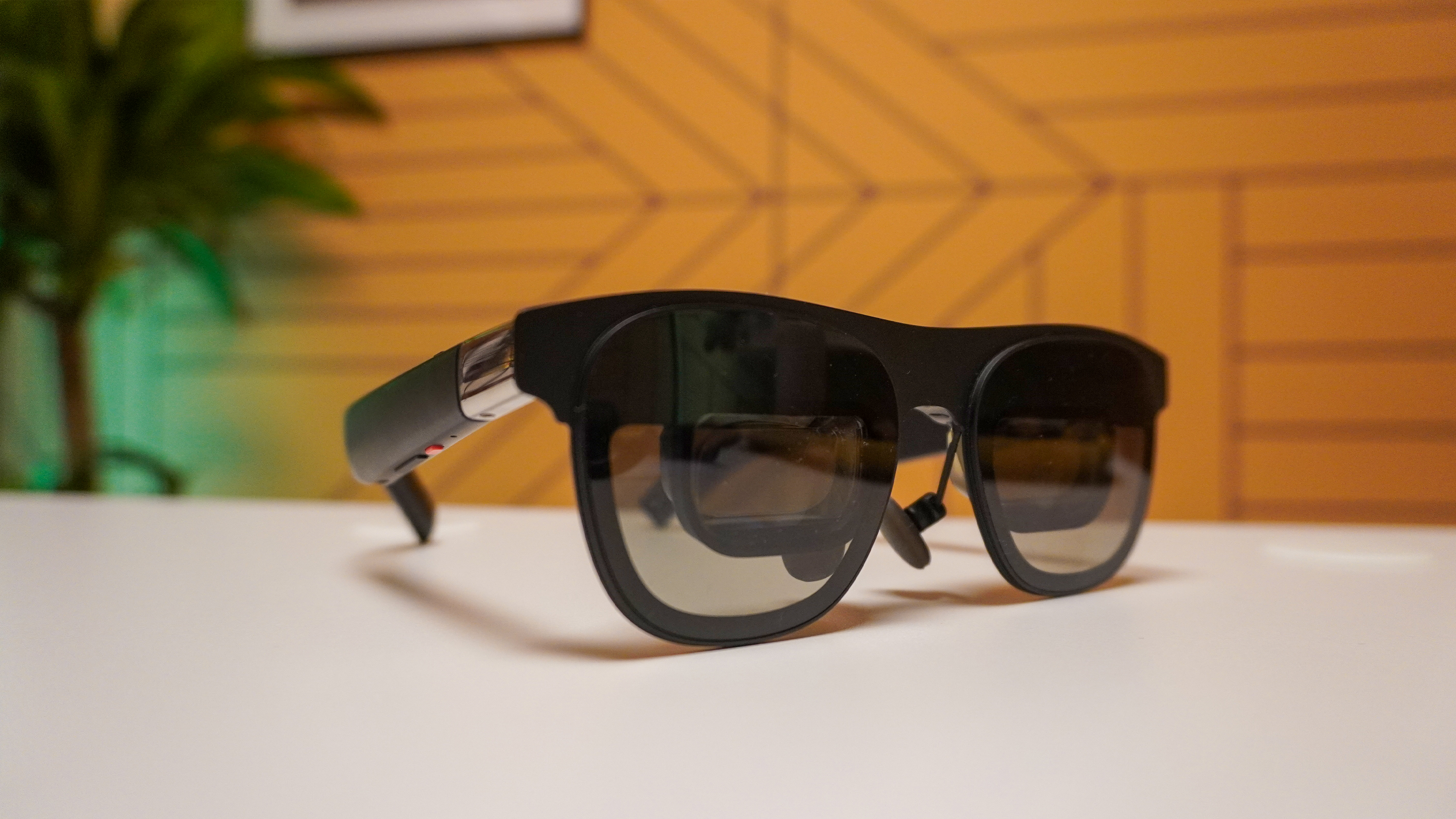Early Verdict
The Xreal One Pro AR glasses are truly the next generation of smart glasses. All of what I love about the Xreal One, combined with drastically upgraded display tech with the widest field of view that you’ll find in a pair of specs.
Pros
- +
+Same sleek design
- +
Same amazing X1 chip
- +
Same Bose-boosted audio
- +
Next generation Micro-OLED display tech is gorgeous
- +
Xreal Eye Camera shows spatial promise…
Cons
- -
-…but just an average camera at the moment
- -
$599 is pricey
Why you can trust Tom's Guide
The new Xreal One Pro AR glasses debuted at CES 2025, and I've tried them.
A lot of this is going to be similar to the Xreal One, so why did the One Pro AR glasses get a spot on our best of CES 2025 awards list? Fair question, and one that comes with a very simple answer. The display tech is unlike anything I’ve seen before.
To make the screens work on pretty much all of the best AR glasses, you’ve got these chunky prisms connected to Micro OLED displays — hidden behind the front lenses of the glasses. You’ll normally hear them called “bird bath” displays. However, Xreal’s ushering in a new generation with vastly smaller flat prism display tech.
And the benefits extend far beyond just being smaller and more inconspicuous on the face (more on that later). But with one eye on the future, Xreal isn’t done there, as the Eye Camera accessory brings a 12MP shooter that you can easily attach to the glasses and take some decent-ish.
Not only that, but in tandem with the X1 chip, you can expect to see some more spatial computing gesture-based interactions come to the specs at some point this year.
Xreal One Pro AR glasses: Specs
| Display | Sony 0.55-inch Micro-OLED display, 171-inch virtual screen with 1080p resolution, 57-degrees field of view up to 700-nits of perceived brightness, software/hardware hybrid IPD adjustment |
| Audio | Dual speakers tuned by Bose |
| Chip | Xreal X1 Chip with Optic Engine 4.0 |
| Price | $599 |
| Release date | March 2025 |
Xreal One Pro AR glasses: What we like
Sticking on the Xreal One Pro, those similarities with the standard Ones are enhanced all the more by the new display tech at play here.
New display. New future.

Instead of a beasty 0.68-inch bird bath prism lens offering a chunky piece of glass behind each lens, Xreal has compressed this all down into a vastly smaller flat prism design. But smaller actually means bigger here, as it can simulate a 171-inch display with a wider 57-degree field of view.
The difference is small on paper when you think about it (the Xreal One’s FoV comes damn close at 50 degrees). But what this means is you could see a whole screen in front of you without needing to turn your head too much. And on top of that, any sign of fringing or edge blur is completely gone.
It’s clear this is the display tech that we’ll all be using going forward, and Xreal is the first to not only jump on it, but make the most of it with X1 silicon.
Feeling snap-happy?

You may have noticed in my pictures of the original Xreal One that there’s a small rubberized area on the nose area of the glasses. Turns out you can pop that out and add in the Xreal Eye Camera — a 12MP snapper that gives you some pretty decent pictures and 1080p video from a first person perspective.
The lack of a battery means that while you can store the photos temporarily onto the X1 chip itself, you’ll need to transfer them over to the device while plugged in for that session, otherwise they’ll be gone forever.

But this camera should open up Xreal’s next attempt to bring depth-of-field tracking to its spatial computing experience. It’s not here yet, and we’ll be waiting a while. But it’s definitely an interesting direction to take!
Xreal One Pro AR glasses: What we don’t like
But while this is definitely another step into the future of AR taking on VR, one key obstacle stands in the way.
$599 is a lot for most

This is definitely on the pricier side of AR glasses. There is the tech in there to make that price worth it — but provided only that you actually want to make the most of it.
While spatial computing capabilities move forward in AR specs, there’s still a majority of people who use these primarily as a glorified external display for the likes of their Steam Deck. For that purpose, there are cheaper options that will offer more than enough of the experience you want!
Xreal One Pro AR Glasses: Outlook

With my time testing these around Vegas, I’m confident that I’ve just seen the true MVPs in AR glasses — the next generational leap forward in display tech combined with that X1 chip you know and love, Bose audio for strong volume and impressive definition, and a sleek, premium construction that feels great to wear for hours.
Throw that Eye Camera into the mix and you’ll soon get an all-in-one AR setup on-the-go. This flat prism is a breakthrough, and I can’t wait to test it properly soon!

Jason brings a decade of tech and gaming journalism experience to his role as a Managing Editor of Computing at Tom's Guide. He has previously written for Laptop Mag, Tom's Hardware, Kotaku, Stuff and BBC Science Focus. In his spare time, you'll find Jason looking for good dogs to pet or thinking about eating pizza if he isn't already.

